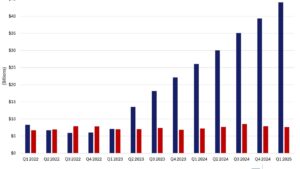This post originally appeared on February 13, 2023
On Friday, after the close, the US Bureau of Labor Statistics revised the December CPI number. People hoping for a Federal Reserve “pivot” to lower interest rates have been focused on the month to month CPI to get a sense of any short-term change in the direction of prices. Government statistics are frequently revised, so this could be considered normal. However, we note that the revision took the monthly change in December prices from negative .1% to positive .1%.
The main reason the stock market rose so much in January is because the CPI convinced people that prices were starting to come down. That was followed by the use of the word “disinflation” several times in recent weeks by Fed. Chairman, Powell. (Disinflation is not lower prices. It is a slowdown in the rate of increase in prices.)
We spent much of last year explaining how the CPI was being understated by as much as 100%. We provided our calculations showing that when reported inflation was 8%, the real rate was in the mid to high teens. We have written continually that government statistics do not represent reality; but rather, are generated by government employees to advance a specific narrative.
In addition, there has been much commentary in the financial community that the Federal Reserve has access to enormous amounts of data. We accept that as true, but the Fed kept rates far too low for far too long meaning they can easily misinterpret data. In addition, none of this does them any good if the data they get shows a decrease in prices when there’s really an increase.
Most importantly, these revisions follow a consistent pattern. From an article we published last month:
In fairness, it’s hard to compile data for a country with an economy as large and diverse as the US, so it’s reasonable to expect some adjustments. However, there is a typical pattern we see. The initial data is what gets all the headlines and the attention, and tends to be optimistic. The later adjustments tend to show a weaker economy than previously thought, and this happens when few are paying attention. If it were an honest process, there would be an equal number of up and down adjustments.
It’s interesting timing when the adjustment takes the numbers from negative to positive and come after the close on a Friday a month later. The January CPI gets announced tomorrow (Tuesday). The market will be riveted and will trade based on the new number. Our question is how accurate will tomorrow’s CPI be.
Information contained in this report is believed by Deep Knowledge Investing (“DKI”) to be accurate and/or derived from sources which it believes to be reliable; however, such information is presented without warranty of any kind, whether express or implied and DKI makes no representation as to the completeness, timeliness or accuracy of the information contained therein or with regard to the results to be obtained from its use. The provision of the information contained in the Services shall not be deemed to obligate DKI to provide updated or similar information in the future except to the extent it may be required to do so.
The information we provide is publicly available; our reports are neither an offer nor a solicitation to buy or sell securities. All expressions of opinion are precisely that and are subject to change. DKI , affiliates of DKI or its principal or others associated with DKI may have, take or sell positions in securities of companies about which we write.
Our opinions are not advice that investment in a company’s securities is suitable for any particular investor. Each investor should consult with and rely on his or its own investigation, due diligence and the recommendations of investment professionals whom the investor has engaged for that purpose.
In no event shall DKI be liable for any costs, liabilities, losses, expenses (including, but not limited to, attorneys’ fees), damages of any kind, including direct, indirect, punitive, incidental, special or consequential damages, or for any trading losses arising from or attributable to the use of this report.



